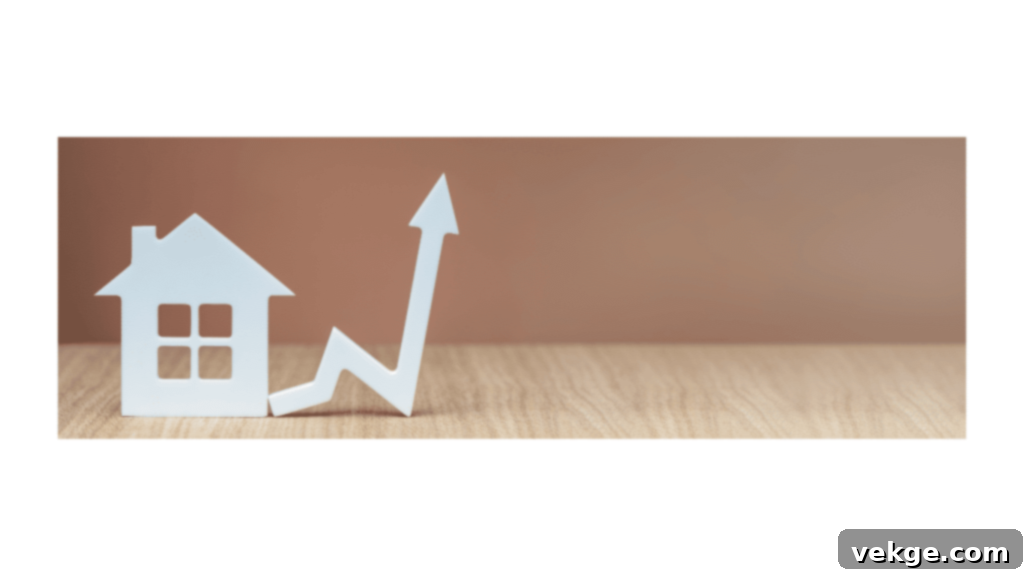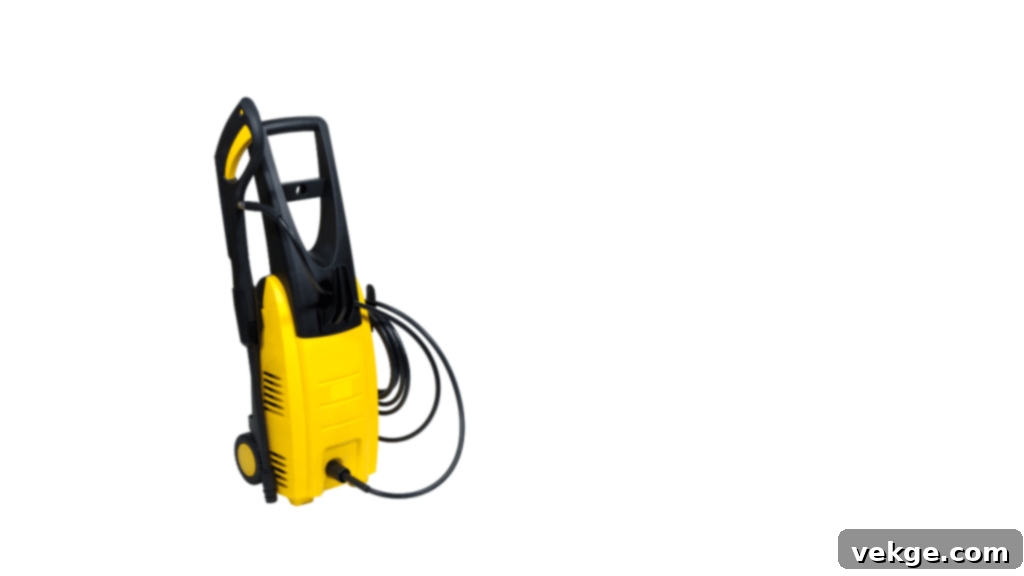The Ultimate Guide to Pressure Washing Your Home: Benefits, Time, and Essential Factors
Pressure washing is more than just a superficial cleaning; it’s a vital aspect of home maintenance that yields a multitude of benefits, from enhancing curb appeal to safeguarding your family’s health. While the desire for a pristine home exterior is universal, a common question often arises: “How long does it actually take to pressure wash a house?” The truth is, the time investment for a thorough pressure washing project can vary significantly, requiring careful consideration for preparation, proper estimation, and the right approach.
Before diving into the specifics of timing and technique, let’s first explore the compelling reasons why this investment in your beloved abode is undeniably worthwhile.
Key Benefits of Pressure Washing Your Home
Investing in regular pressure washing offers significant advantages that extend beyond mere aesthetics. It’s a proactive measure that protects your property, promotes a healthier living environment, and provides tangible economic returns.
1. Enhance Your Home’s Exterior Appearance
A home’s exterior is the first impression it makes, and a clean facade speaks volumes. Pressure washing can dramatically improve the visual appeal of your property by meticulously removing accumulated dirt, grime, unsightly stains, destructive mold, and stubborn mildew. This deep cleaning process works to revitalize and restore your home’s original beauty, making it look fresh and well-cared for.
Beyond immediate aesthetic improvements, consistent pressure washing plays a crucial role in maintaining various exterior surfaces such as siding, expansive decks, welcoming patios, and functional driveways. By regularly eliminating corrosive contaminants, you reduce the premature wear and tear on these surfaces, significantly extending their lifespan and diminishing the need for costly replacements or repairs down the line.
Furthermore, if you’re planning a home renovation project like painting or refinishing your exterior, pressure washing is an indispensable preparatory step. It ensures that the surface is immaculately clean, creating an optimal foundation for new paint or finishes to adhere properly, guaranteeing a smoother application and a longer-lasting result.
For areas that are typically difficult to reach, such as high walls, steep roofs, and clogged gutters, professional pressure washing services, like those offered by Full Color Cleaners | Pressure Washing Austin TX, make the task safer and remarkably easier. Their expertise ensures every nook and cranny is cleaned effectively without risk.
2. Promote Health, Safety, and Environmental Friendliness
The health and safety of your household are paramount, and pressure washing contributes significantly to both. The presence of mold, mildew, and algae growth on exterior surfaces can pose serious health hazards, particularly for individuals suffering from allergies or respiratory issues. Pressure washing effectively eliminates these biological growths, removing allergens like pollen and mold spores from your home’s exterior and consequently contributing to improved indoor air quality.
From a safety standpoint, these biological growths – specifically algae, mold, and mildew – can create treacherously slippery surfaces when wet, turning walkways, patios, and decks into accident waiting zones. Regular pressure washing removes these hazards, drastically reducing the risk of slip-and-fall accidents for residents and visitors alike. Moreover, by clearing debris and blockages from gutters and downspouts, pressure washing ensures rainwater flows freely, preventing water damage to your foundation and mitigating the formation of hazardous ice dams in colder climates.
Unlike many traditional cleaning methods that rely on harsh chemicals, pressure washing primarily uses high-pressure water. This makes it an inherently environmentally friendly cleaning method. When appropriate, biodegradable cleaning solutions can be used to enhance effectiveness without harming surrounding plants, pets, or nearby water sources, ensuring a clean home without ecological compromise.
3. An Economically Smart Investment

Beyond the immediate benefits, pressure washing offers significant long-term economic advantages, making it a wise investment for any homeowner.
Increased Property Value
A well-maintained and sparkling exterior significantly boosts your home’s curb appeal, which is a key factor in its market value. A clean and visually appealing home is far more attractive to potential buyers, translating into higher resale values and a quicker sale when you decide to put your property on the market. It shows prospective buyers that the home has been cared for, implying fewer hidden issues.
Cost-Effective Maintenance
Compared to the expenses of extensive repairs, repainting, or even replacing exterior components prematurely, pressure washing is an incredibly cost-effective maintenance strategy. Regular cleaning prevents the buildup of damaging elements, thereby averting more significant and expensive problems down the road. It saves you money by preserving the integrity and appearance of your existing structures.
Potentially Increased Energy Efficiency
While often overlooked, a layer of dirt, grime, and biological growth on your home’s exterior surfaces, particularly on roofs and siding, can act as an insulating barrier. Removing these contaminants through pressure washing can help your home’s surfaces reflect sunlight more effectively, potentially leading to improved energy efficiency, especially in warmer climates, by reducing the workload on your HVAC system.
Significant Time Savings
Pressure washing is an exceptionally time-efficient method for cleaning large exterior surfaces. What might take days of strenuous manual scrubbing, brushing, and rinsing can often be accomplished in a matter of hours with a powerful pressure washer. This efficiency saves you not only valuable time but also physical effort and labor costs compared to traditional, more intensive cleaning approaches.
Factors Influencing Pressure Washing Time
Understanding the duration required to pressure wash a house involves more than just a simple estimate. Several critical factors come into play, each significantly impacting the overall time investment. By considering these elements, you can better anticipate the scope of work, whether you’re tackling a DIY project or hiring professionals.
1. Size and Complexity of the House
Unsurprisingly, the total square footage of the surfaces slated for pressure washing is a primary determinant of the time needed. Larger homes with more extensive siding, bigger driveways, and expansive patios will inherently require more time to clean thoroughly. Beyond mere size, the architectural complexity of your house also plays a crucial role. Homes with multiple stories, intricate gables, dormers, numerous windows, or elaborate trim require more meticulous work and frequent repositioning of equipment, adding to the overall duration.
Some professional service providers leverage modern tools like Google Earth or online property sites (especially if a property is for sale) to get a near accurate estimate of the dimensions and features, which helps in calculating both the time and cost of their services.
2. Type of Surfaces Being Cleaned
Different exterior materials react differently to pressure washing and demand specific techniques, pressures, and sometimes cleaning agents. This variation directly impacts the time required and the level of care that must be exercised. The following table outlines common surface types and their associated cleaning considerations:
| Type of Surface | Difficulty Level | Remarks |
|---|---|---|
Vinyl Siding |
Low | Smooth siding materials like vinyl are generally easy to clean with a pressure washer, often with a soft wash approach. They don’t trap dirt as easily, and most stains and grime can be removed quickly and safely. |
Wooden Siding |
Moderate to High | Wooden siding can be more challenging to pressure wash due to its porous nature, which readily absorbs dirt, mold, and stains. Extreme care must be taken to use appropriate pressure settings and techniques to avoid damaging the wood, splintering, or etching. |
Brick |
Low to Moderate | Brick surfaces are relatively easy to clean. However, the mortar between the bricks may require extra attention to avoid damage while ensuring a deep clean. Older and weathered bricks might also necessitate a gentler approach and more time. |
Stucco |
Moderate | Stucco surfaces feature a textured finish that can effectively trap dirt, algae, and mildew, making cleaning a bit more challenging. Pressure washing can be highly effective, but it demands careful technique to prevent damage to the finish. |
Concrete and Driveway |
Low to Moderate | Concrete surfaces are typically robust and easy to clean. However, driveways often accumulate stubborn oil stains, tire marks, and heavy grime which may require specialized cleaning solutions and additional effort. |
Decks and Patios |
Moderate to High | Wooden decks and concrete patios can be more challenging due to their horizontal orientation, making them prone to significant accumulation of dirt, mold, and mildew, especially within crevices and pores. Soft washing is often preferred for wood to prevent damage. |
Roofs |
High | Roof cleaning is often the most challenging and risky task. The angles of the roof, the need for safety equipment, and the critical importance of avoiding damage to roofing materials (shingles, tiles) make this a complex task best left to professional expertise. |
Metal Surfaces |
Low | Examples include metal siding and gutters. Metal surfaces are generally very easy to clean with a pressure washer. Their smooth, non-porous finish allows for efficient dirt and stain removal without much effort. |
Paved Surfaces |
Low to Moderate | Paved surfaces like asphalt driveways may have embedded oil stains and general grime that require a moderate level of effort and specific cleaning agents to clean effectively without damaging the surface. |
Fences |
Moderate | Wooden and metal fences can accumulate dirt, mold, and mildew, particularly on weather-exposed sides, making their cleaning a moderate challenge. Wood fences require careful pressure to avoid splintering. |
Pools and Pool Decks |
Moderate | Pool surfaces and their surrounding decks are susceptible to algae growth, mineral deposits, and dirt, which can be challenging to clean effectively without damaging the pool liner or deck material. Regular maintenance is essential. |
Glass and Windows |
Low | Cleaning glass and windows with a pressure washer is typically easy and effective when done correctly. However, excessive pressure can lead to breakage. It’s often safer to consult or hire local window cleaning professionals to avoid any damage. |
Given the diverse challenges presented by various surfaces, the appropriate selection of equipment, the application of correct techniques, and the presence of professional expertise are paramount. These elements are the fundamental keys to achieving superior cleaning results while concurrently minimizing the risk of damage to property and preventing potential accidents.
3. Level of Dirt and Stains
The extent of contamination on your home’s exterior is a major time factor. Surfaces that have gone years without cleaning, or are heavily impacted by environmental factors like living near construction sites, busy roads, or under dense tree cover, will naturally take much longer to clean. Stubborn stains such as deep-set rust, heavy oil spills, sap, or significant mold and mildew growth require more targeted treatment, stronger cleaning solutions, and potentially multiple passes, all of which add to the total time.
4. Pressure Washer Power and Nozzle Selection

The specific equipment used is a critical element in determining cleaning efficiency and speed. A higher-powered pressure washer, typically measured in Pounds Per Square Inch (PSI) and Gallons Per Minute (GPM), can clean surfaces more quickly because it generates greater water pressure and flow. This increased power enhances cleaning efficiency, allowing you to cover a larger area in a shorter amount of time, thereby reducing the overall cleaning duration.
Equally important is the selection of the correct nozzle. The nozzle’s angle and orifice size directly influence the pressure and spray pattern of the water stream. Narrower nozzles (e.g., 0-degree for a pencil jet, or 15-degree for a concentrated fan) deliver a highly focused, high-pressure stream, ideal for removing stubborn stains but requiring precise control and more time for detailed work. Conversely, wider nozzles (e.g., 40-degree or soap nozzles) provide a broader, lower-pressure spray pattern, allowing you to cover larger areas more quickly, though they may be less effective on deeply embedded grime.
Matching the pressure washer and nozzle to the specific cleaning task is essential to balance speed with thoroughness and safety. An experienced operator will adjust the nozzle as needed, ensuring optimal results without causing damage.
5. Accessibility and Obstacles
The ease of access to all parts of your home’s exterior can significantly impact cleaning time. Obstacles such as dense landscaping, delicate garden beds, outdoor furniture, or utility fixtures require careful maneuvering and protection, which can slow down the process. Similarly, working around multiple windows, complex architectural details, or in confined spaces requires more precision and time than cleaning a flat, unobstructed wall. Homes on steep slopes or with very tall sections also present accessibility challenges that increase the job’s duration and complexity, often requiring specialized ladders, scaffolding, or lifts.
6. Pre-soaking and Cleaning Agents
Pre-soaking surfaces with appropriate cleaning solutions can be a considerable time-saver. This step helps to effectively loosen accumulated dirt, grime, mold, mildew, and other contaminants, making them significantly easier to remove during the subsequent pressure-washing phase. Specialized detergents designed for specific types of stains or surfaces can dramatically improve cleaning efficacy and reduce the need for multiple passes with the pressure washer.
However, it’s crucial to strike a balance: allowing the pre-soak solution to dwell for the recommended time is effective, but letting it dry on the surface can lead to unsightly streaking or residue, potentially requiring more work and adding to the overall cleaning time. Proper application and rinsing are key.
7. Post-Washing Clean-up
The pressure washing process doesn’t end when the last section of your house is clean. Post-washing clean-up is an essential final step that ensures a professional and satisfactory outcome. This includes thoroughly rinsing away any residual cleaning agents or detergents from all surfaces, windows, and surrounding plants to prevent damage or streaks. It also involves tidying up the work area, returning any moved items, and ensuring the cleaned space is safe and ready for use. While this phase requires additional time, it is crucial for achieving a pristine finish and avoiding unwanted side effects from leftover chemicals.
8. Operator Experience and Skill
The proficiency of the individual operating the pressure washer is a significant factor. Experienced professionals understand the nuances of different surfaces, optimal pressure settings, appropriate nozzle selection, and effective cleaning techniques. They can work more efficiently and safely, minimizing the risk of damage and completing the job in less time than a novice or a less experienced DIY enthusiast. Professionals also have access to higher-grade equipment and specialized attachments that further enhance efficiency.
9. Weather Conditions
Environmental factors play a notable role in the duration and effectiveness of pressure washing. Low temperatures can slow down the cleaning process, as cold water and surfaces may require more time for cleaning agents to effectively break down and remove dirt, mold, and grime. Additionally, extreme cold can impact the performance of equipment and even lead to freezing issues.
Conversely, extremely hot or windy weather can cause water and cleaning agents to evaporate very quickly, making it necessary to work in smaller sections to prevent streaking or leaving behind residue. Working under such conditions often means needing to re-wet surfaces or reapply solutions, which can extend the overall cleaning time and effort required.
When Time is a Constraint: Prioritizing Your Pressure Washing

In situations where time is a critical limiting factor, it’s wise to prioritize the areas of your home that are most visible or essential for immediate needs. Focus on high-impact zones such as the main entrance, front-facing facade, primary walkways, and outdoor entertainment spaces like patios or decks. Even a focused, quicker wash on these key areas can yield significant, noticeable improvements, instantly making your home appear cleaner, safer, and more presentable for guests or personal enjoyment. While a fully comprehensive pressure washing offers the most long-term benefits, a strategic approach ensures you address the most pressing aesthetic and safety concerns when time is short, providing an immediate boost to your home’s appeal.
Conclusion: The Value of a Well-Timed Wash
Accurately estimating the time required for pressure washing your house demands a comprehensive understanding of a multitude of influencing factors. From the sheer size and architectural complexity of your home to the specific types of surfaces, the level of dirt accumulation, the power of your equipment, the impact of weather conditions, and the skill of the operator—each element plays a crucial role in the overall timeline. It’s imperative to remember that every house possesses its unique characteristics, meaning a standardized, one-size-fits-all approach will rarely yield the optimal results.
The ultimate goal is to achieve a harmonious balance between efficiency and thoroughness. This ensures that your house is not merely superficially clean, but truly a well-maintained, safe, and welcoming haven for its occupants. Investing the right amount of time and effort, or entrusting the task to skilled professionals, will safeguard your home’s integrity, enhance its beauty, and protect your long-term investment.
